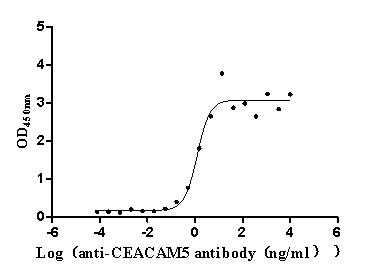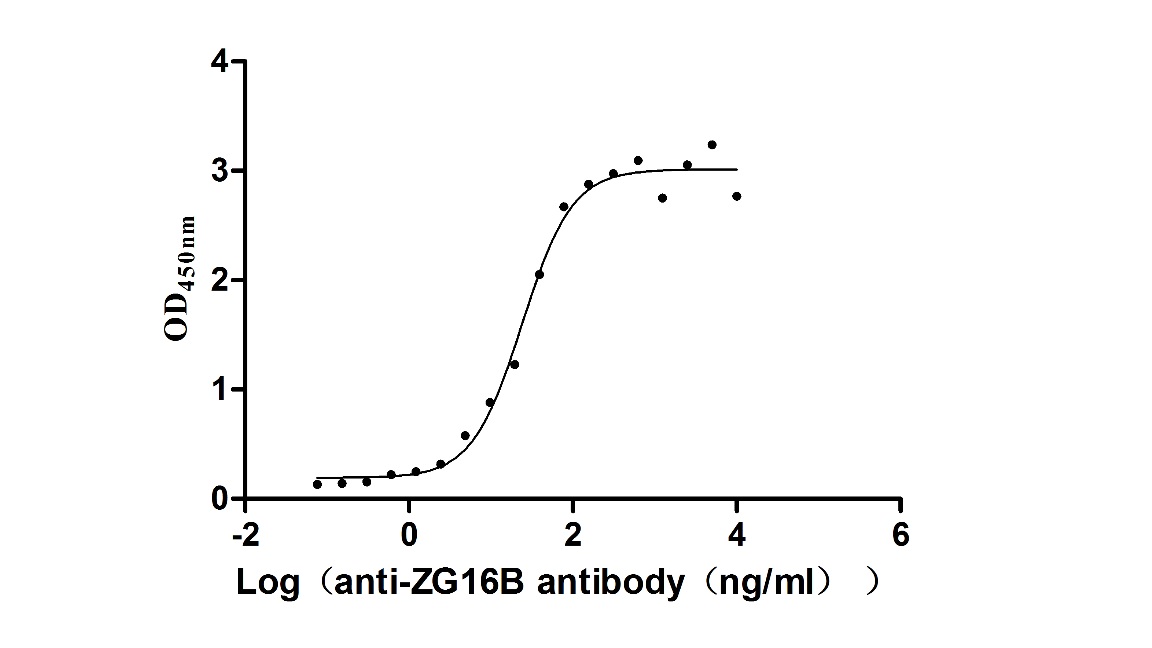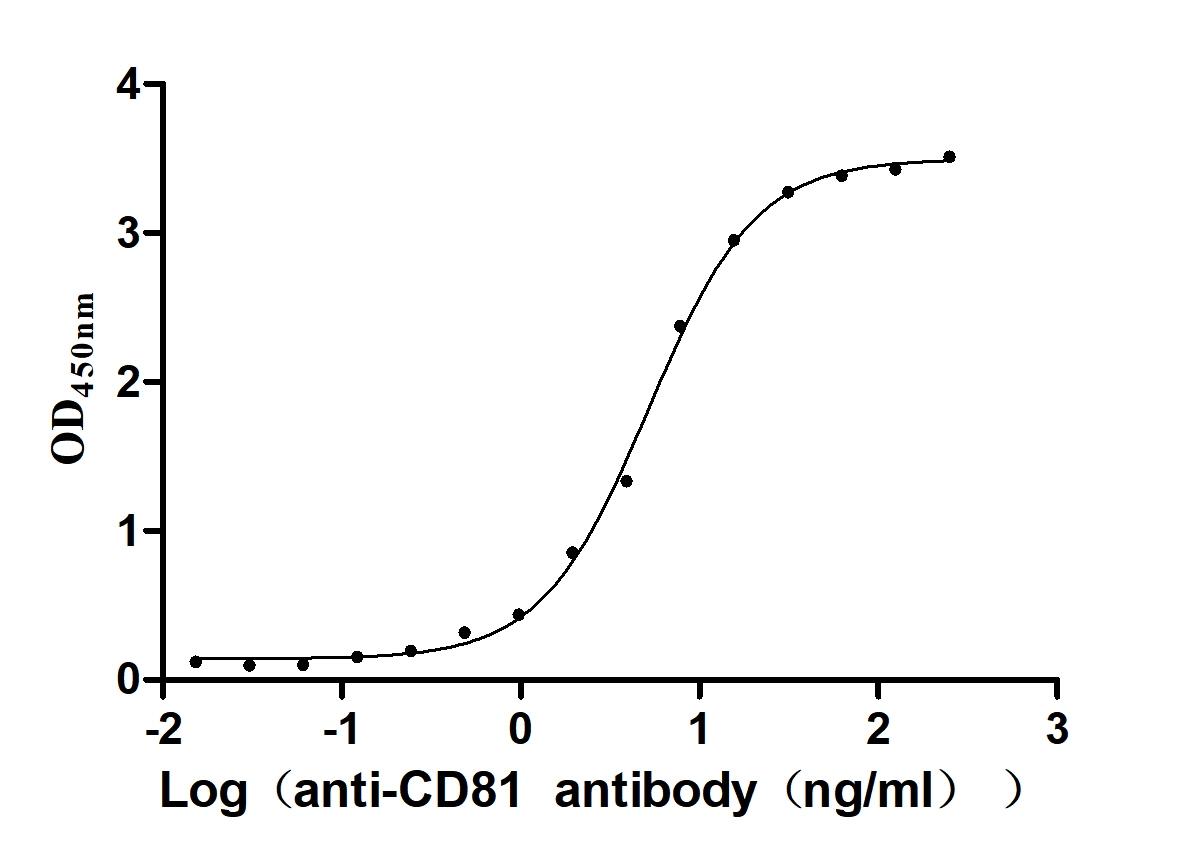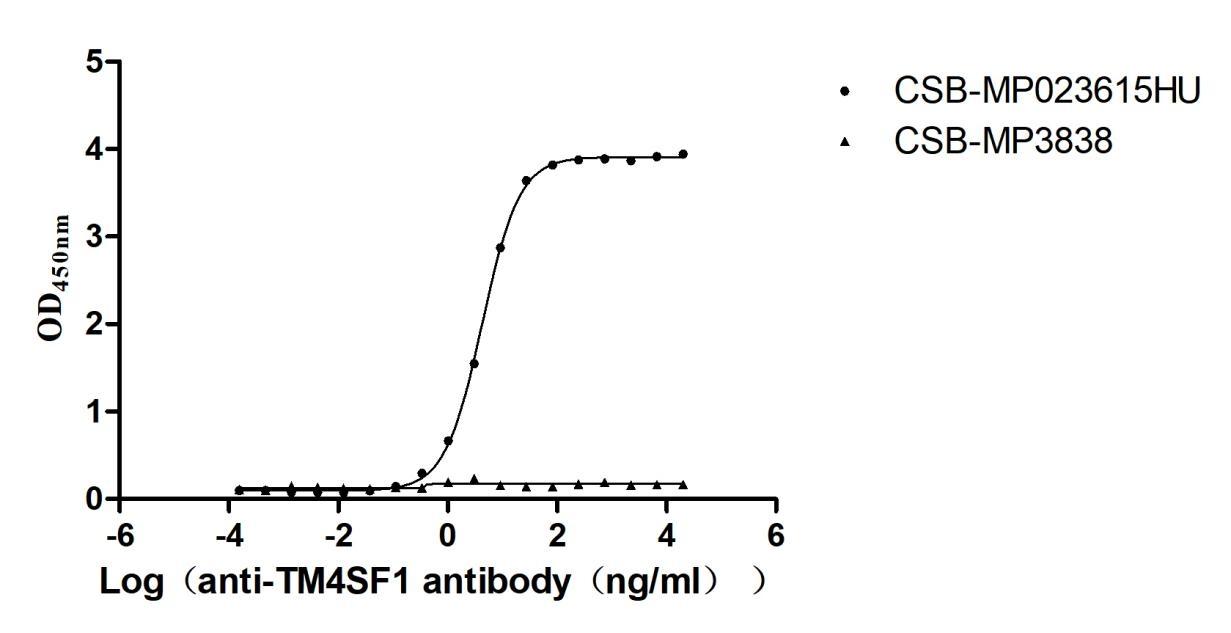Recombinant Arabidopsis thaliana Protein BRASSINOSTEROID INSENSITIVE 1 (BRI1), partial
-
中文名称:Recombinant Arabidopsis thaliana Protein BRASSINOSTEROID INSENSITIVE 1(BRI1) ,partial
-
货号:CSB-YP517773DOA
-
规格:
-
来源:Yeast
-
其他:
-
中文名称:Recombinant Arabidopsis thaliana Protein BRASSINOSTEROID INSENSITIVE 1(BRI1) ,partial
-
货号:CSB-EP517773DOA
-
规格:
-
来源:E.coli
-
其他:
-
中文名称:Recombinant Arabidopsis thaliana Protein BRASSINOSTEROID INSENSITIVE 1(BRI1) ,partial
-
货号:CSB-EP517773DOA-B
-
规格:
-
来源:E.coli
-
共轭:Avi-tag Biotinylated
E. coli biotin ligase (BirA) is highly specific in covalently attaching biotin to the 15 amino acid AviTag peptide. This recombinant protein was biotinylated in vivo by AviTag-BirA technology, which method is BriA catalyzes amide linkage between the biotin and the specific lysine of the AviTag.
-
其他:
-
中文名称:Recombinant Arabidopsis thaliana Protein BRASSINOSTEROID INSENSITIVE 1(BRI1) ,partial
-
货号:CSB-BP517773DOA
-
规格:
-
来源:Baculovirus
-
其他:
-
中文名称:Recombinant Arabidopsis thaliana Protein BRASSINOSTEROID INSENSITIVE 1(BRI1) ,partial
-
货号:CSB-MP517773DOA
-
规格:
-
来源:Mammalian cell
-
其他:
产品详情
-
纯度:>85% (SDS-PAGE)
-
基因名:BRI1
-
Uniprot No.:
-
别名:BRI1; At4g39400; F23K16.30Protein BRASSINOSTEROID INSENSITIVE 1; AtBRI1; EC 2.7.10.1; EC 2.7.11.1; Brassinosteroid LRR receptor kinase
-
种属:Arabidopsis thaliana (Mouse-ear cress)
-
蛋白长度:Partial
-
蛋白标签:Tag type will be determined during the manufacturing process.
The tag type will be determined during production process. If you have specified tag type, please tell us and we will develop the specified tag preferentially. -
产品提供形式:Lyophilized powder
Note: We will preferentially ship the format that we have in stock, however, if you have any special requirement for the format, please remark your requirement when placing the order, we will prepare according to your demand. -
复溶:We recommend that this vial be briefly centrifuged prior to opening to bring the contents to the bottom. Please reconstitute protein in deionized sterile water to a concentration of 0.1-1.0 mg/mL.We recommend to add 5-50% of glycerol (final concentration) and aliquot for long-term storage at -20℃/-80℃. Our default final concentration of glycerol is 50%. Customers could use it as reference.
-
储存条件:Store at -20°C/-80°C upon receipt, aliquoting is necessary for mutiple use. Avoid repeated freeze-thaw cycles.
-
保质期:The shelf life is related to many factors, storage state, buffer ingredients, storage temperature and the stability of the protein itself.
Generally, the shelf life of liquid form is 6 months at -20°C/-80°C. The shelf life of lyophilized form is 12 months at -20°C/-80°C. -
货期:Delivery time may differ from different purchasing way or location, please kindly consult your local distributors for specific delivery time.Note: All of our proteins are default shipped with normal blue ice packs, if you request to ship with dry ice, please communicate with us in advance and extra fees will be charged.
-
注意事项:Repeated freezing and thawing is not recommended. Store working aliquots at 4°C for up to one week.
-
Datasheet :Please contact us to get it.
靶点详情
-
功能:Receptor with a dual specificity kinase activity acting on both serine/threonine- and tyrosine-containing substrates. Regulates, in response to brassinosteroid binding, a signaling cascade involved in plant development, including expression of light- and stress-regulated genes, promotion of cell elongation, normal leaf and chloroplast senescence, and flowering. Binds brassinolide, and less effectively castasterone, but not 2,3,22,23-O-tetramethylbrassinolide or ecdysone. May be involved in a feedback regulation of brassinosteroid biosynthesis. Phosphorylates BRI1-associated receptor kinase 1 (BAK1), Transthyretin-Like protein (TTL) and SERK1 on 'Ser-299' and 'Thr-462' in vitro. May have a guanylyl cyclase activity. Phosphorylates BSK1, BSK2 and BSK3 in vitro. Phosphorylates BSK1, BSK3, BSK5, BSK6, BSK8 AND BSK11 in vitro.
-
基因功能参考文献:
- identification of 83 new point mutations in BRI1, including nine mutations that exhibit an allelic series of typical bri1 phenotypes, from subtle to severe morphological alterations, is reported. PMID: 28461403
- These results thus suggest that signalling specificity between these pathways may be explained by the spatial separation of FLS2 and BRI1 with their associated signalling components within dedicated plasma membrane nanodomains. PMID: 28262094
- PP2A regulatory B subunits mediate the binding and dephosphorylation of BRI1 and the subcellular localization of PP2A specifies its substrate selection and distinct effects on BR signaling PMID: 26517938
- Decreased response to exogenously applied brassinolide and altered BR marker gene expression demonstrate that zmbri1 (zea mays Bri1]-RNA interference transgenic lines have compromised Bbrassinosteroid signaling. PMID: 26162429
- These results suggest that brassinosteroid (BR) promotes the partitioning of BRI1 into functional membrane microdomains to activate BR signaling. PMID: 25896454
- Internalization and vacuolar targeting of the brassinosteroid hormone receptor BRI1 are regulated by ubiquitination. PMID: 25608221
- These results reveal complex differential regulation of BRI1 expression, and suggest that by influencing the distribution and abundance of the receptor this regulation can enhance or attenuate brassinosteroid signalling. PMID: 24488524
- Endocytosis of the leucine-rich repeat receptor kinase, brassinosteroid insensitive1 (BRI1), was shown to depend on AP-2. PMID: 23975899
- BRI1-mediated signalling is attractive for mathematical modelling approaches to understand and interpret the spatial and temporal dynamics of signal transduction cascades in planta. PMID: 23421559
- multiple brassinosteroid signaling kinases (BSKs) interact with BRI1 and serve as substrates of BRI1 phosphorylation. PMID: 23496207
- BRI1 receptor occupancy is linked to root growth. PMID: 22802611
- a missense mutation in the Arabidopsis EMS-mutagenized bri1 suppressor 3 (EBS3) gene suppresses a dwarf mutant, bri1-9, the phenotypes of which are caused by ER retention and ERAD of a brassinosteroid receptor, BRASSINOSTEROID-INSENSITIVE 1 (BR1) PMID: 22733738
- results establish a novel assay for recombinant BRI1 transphosphorylation activity and collectively uncover a possible new link between Ca2+ and BR signalling PMID: 22309147
- Data demonstrate that the FLT of BRI1-GFP can be used as a non-invasive probe to analyse long-distance BL signaling in Arabidopsis seedlings. PMID: 21617383
- Autophosphorylation of serine-891 is one of the deactivation mechanisms that inhibit BRI1 activity and BR signaling in vivo. PMID: 22184234
- results demonstrate that mutation of BRI1 can enhance photosynthesis and leaf growth/vascularization and may suggest new approaches to increase whole plant carbon assimilation and growth PMID: 21795582
- The Brassinosteroid Insensitive1 (BRI1) receptor fused to GFP, under control of its own promoter, was quantified. PMID: 21617031
- structure of the Arabidopsis thaliana BRI1 ligand-binding domain, determined by X-ray diffraction at 2.5 A resolution PMID: 21666665
- crystal structures of BRI1(LRR) in free and brassinolide-bound forms PMID: 21666666
- A new bri1 allele, bri1-120, whose mutation site has not yet been found or characterized, was identified. PMID: 21219661
- Phosphorylation of a key tyrosine within this membrane targeting motif releases BKI1 into the cytosol following ligand perception by BRI1 PMID: 21289069
- Data show that bri1-R1 compensates for the protein-folding abnormalities caused by bri1-5, restoring accumulation of the receptor and its delivery to the cell surface. PMID: 20457881
- A bri1-9 mutant was more resistant to cold than the BRI1-overexpressing transgenic plants as well as wild-type. PMID: 20053182
- brassinosteroids bind directly to the 94 amino acids comprising ID-LRR22 in the extracellular domain of BRI1, and define a new binding domain for steroid hormones PMID: 15650741
- BRI1 is part of the Arabidopsis SOMATIC EMBRYOGENESIS RECEPTOR-LIKE KINASE1 protein complex. PMID: 16473966
- a BRI1-interacting protein, BKI1,which is a negative regulator of brassinosteroid signaling is reported; BKI1 is a substrate of BRI1 kinase & limits interaction of BRI1 with its proposed coreceptor, BAK1, suggesting that BKI1 prevents activation of BRI1 PMID: 16857903
- Attenuation of brassinosteroid signaling enhances FLC expression and delays flowering. PMID: 17611230
- These results suggest that bri1-301, even with extremely impaired kinase activity, still retains partial function in regulating plant growth and development. PMID: 18332904
- 3 homologous brassinosteroid (BR)-signaling kinases (BSK1, BSK2 & BSK3)were identified; the BSKs are phosphorylated by BRI1; results demonstrate that BSKs are the substrates of BRI1 kinase that activate downstream BR signal transduction PMID: 18653891
显示更多
收起更多
-
亚细胞定位:Cell membrane; Single-pass type I membrane protein. Endosome membrane; Single-pass type I membrane protein.
-
蛋白家族:Protein kinase superfamily, Ser/Thr protein kinase family
-
组织特异性:Expressed ubiquitously.
-
数据库链接:
Most popular with customers
-
Recombinant Human Nectin-4 (NECTIN4), partial (Active)
Express system: Mammalian cell
Species: Homo sapiens (Human)
-
Recombinant Human Claudin-6 (CLDN6)-VLPs (Active)
Express system: Mammalian cell
Species: Homo sapiens (Human)
-
Express system: Mammalian cell
Species: Homo sapiens (Human)
-
Recombinant Macaca fascicularis zymogen granule protein 16 homolog B (ZG16B) (Active)
Express system: Mammalian cell
Species: Macaca fascicularis (Crab-eating macaque) (Cynomolgus monkey)
-
Recombinant Human CD81 antigen (CD81), partial (Active)
Express system: Mammalian cell
Species: Homo sapiens (Human)
-
Recombinant Human Transmembrane 4 L6 family member 1(TM4SF1)-VLPs (Active)
Express system: Mammalian cell
Species: Homo sapiens (Human)


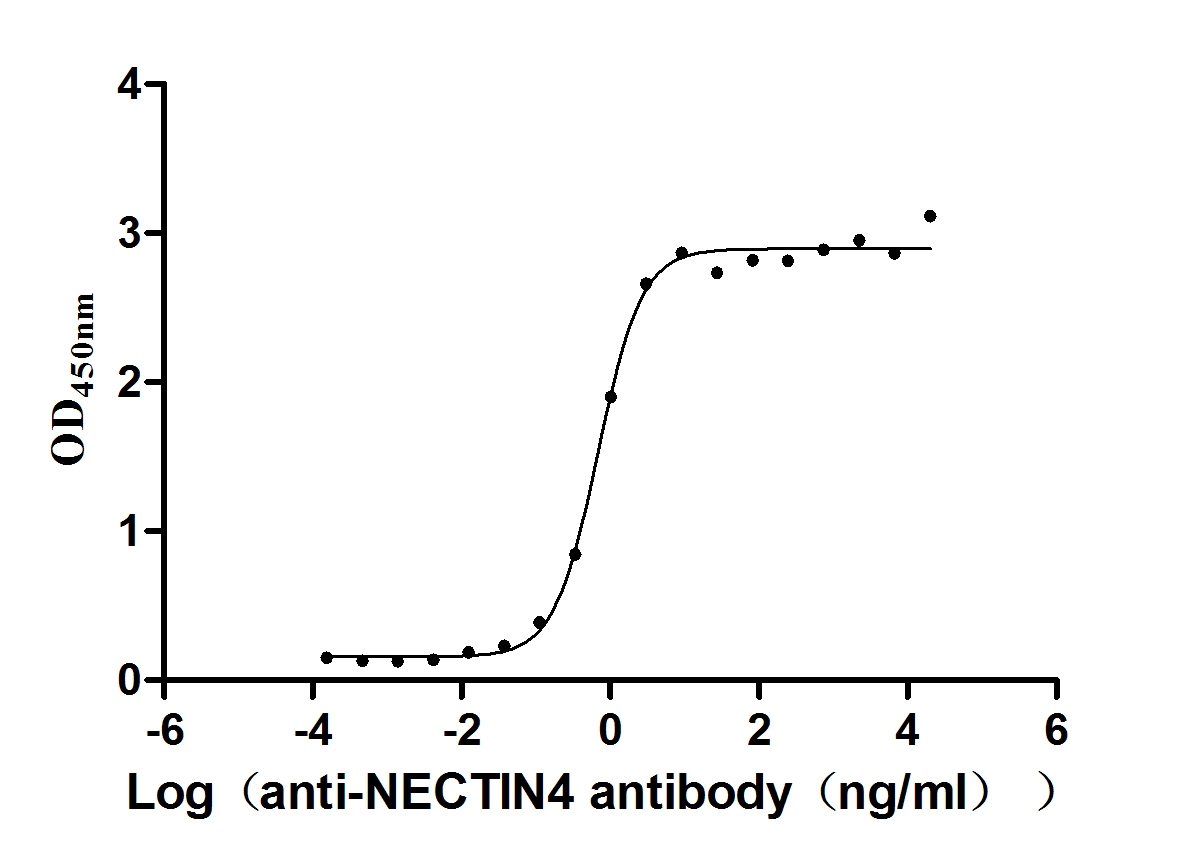
-AC1.jpg)
